Something went wrong!
Hang in there while we get back on track
Best attractions in Friuli Venezia Giulia
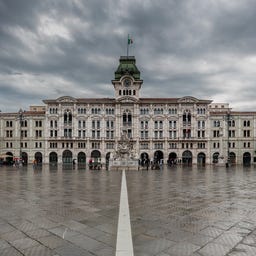
Visiting the main square, the largest square in Europe with open access to the sea, is a must in Trieste. Don't be surprised if the architecture reminds you of Vienna. Trieste was part of Austria until 1918, and the elegant palaces are built in the same architectural style as the Viennese Ringstrasse.

Situated majestically above the Adriatic Sea, the elegant Castello Miramare impresses with fantastic views. Visit the interior to gain truly surprising insights into the life of Archduke Maximilian. Here, you will learn more about Maximilian's dramatic downfall in Mexico and see his unique interior design. On the terrace right by the sea, you will be rewarded with fantastic photos, and the extensive, enchanting gardens invite you to linger.
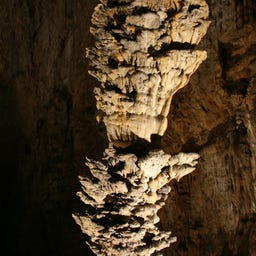
Only 15 km from Trieste (near the village of Borgo Grotta Gigante), the Giant Cave with its imposing stalactite formations is definitely worth a visit. Listed in the Guinness Book of Records until 2010 as the world's largest show cave accessible to tourists, it attracts about 90,000 visitors annually with its amazing stalactites and stalagmites.

High up on a hill, the Castello offers the best panoramic view over the rooftops of Trieste. The medieval castle from the 16th century has its roots in ancient Roman times. The castle museum showcases a beautiful weapons collection and offers interesting insights into the Roman and military history of the city.
How much time is needed? Plan for half a day to climb and visit the Castello and the Cathedral of Trieste.
Upon entering through the gate, look to the left: Here stand the original Moors Mikeze and Jakeze, who once adorned the town hall.
Tip: The castle is about a 30-minute walk from the old town. Those looking to save energy can use the elevator in the parking garage in the old town to get directly to the hill.

The Risiera di San Sabba in Trieste was the only Nazi concentration camp on Italian soil with a crematorium. From 1943 to 1945, the former rice husking factory served as a police detention center, through which over 1,450 Jewish prisoners and numerous political detainees passed - most of whom were murdered here or deported to extermination camps like Auschwitz.
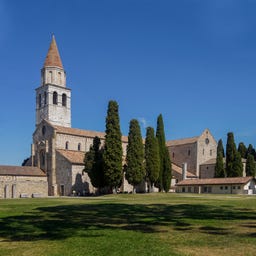
The Basilica of Santa Maria Assunta in Aquileia, built in the 4th century and repeatedly remodeled, is a UNESCO World Heritage site and impresses with one of the most extensive and best-preserved mosaic floors of the Western Roman Empire. It was discovered and uncovered beneath a medieval brick ceiling. It depicts scenes from the Old Testament and life at that time. Another highlight is the Campanile, built in the 11th century and later raised to 73 meters. From its top, you can enjoy a charming view of the surroundings.
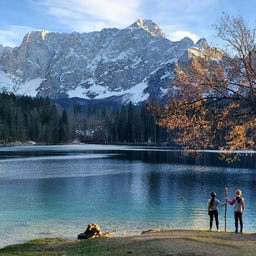
The Fusine Lakes, surrounded by the dense Tarvisio Forest and majestic mountains, offer a breathtaking postcard-like setting. The crystal-clear water reflects the mountain peaks, while hiking trails ranging from easy to challenging are suitable for both beginners and experienced hikers. There are several food stations, and numerous benches along the shores offer good resting spots. Particularly beautiful in autumn with the yellow-red leaves. A paradise for nature lovers and those seeking tranquility. Also suitable for families with children and dogs.
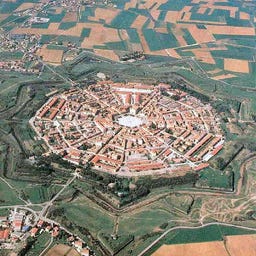
Palmanova is a fascinating star-shaped fortress town from the Renaissance period, ideal for a half-day trip. The town, founded in 1593 by the Republic of Venice, impresses with its geometric perfection and symmetrical streets. Of course, you can only see this from the air. A walk through the town leads to the huge, seemingly oversized Piazza Grande, a hexagonal square surrounded by important buildings such as the Cathedral and the Governor's Palace. Markets and local festivals often take place here. The city walls and bastions also offer wonderful views of the surroundings.
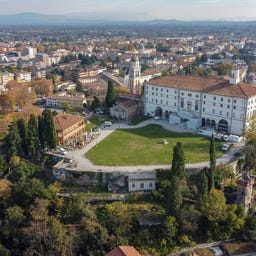
Majestically, the Castello di Udine sits atop a Bronze Age hill in the historic center of the city. The current Renaissance structure was built between 1517 and 1567, after an earthquake destroyed the previous fortress, and was beautifully decorated by Giovanni da Udine, a student of Raphael.

The Canale Grande in Trieste, built in 1754, is small compared to Venice's famous canal at only 300 meters long, but still charming. Originally, it was intended for ships to sail directly into the city. Today, surrounded by historic buildings, the canal is a wonderful place for a stroll. The pedestrian bridge Passaggio Joyce is particularly popular for photos.

High above the Tarvisio basin stands Monte Santo di Lussari with its distinctive pilgrimage church from the 16th century, which brings together Germanic, Romance, and Slavic pilgrims as the "Church of the Three Peoples." The sanctuary's origins date back to 1360 when a Madonna with Child was found here. Since then, the church, which has been destroyed multiple times, has been rebuilt and was completely renovated in 2000.

The Molo Audace is a historic pier located on the sea shore of Trieste, just steps from Piazza Unità d'Italia and the Grand Canal. Originally constructed in the mid-18th century using the wreck of the Austrian vessel San Carlo, it has been extended over the years to its current length of 246 meters. Today, the pier serves as a popular spot for leisurely walks and offers stunning views of the seafront and the city. It is also a traditional meeting place for couples, who often share a kiss at the end of the pier.

The Cathedral of San Giusto in Trieste is located on the hill of the same name and is a beautiful example of Romanesque-Gothic architecture. The beautiful rose window and the impressive apse mosaics, depicting scenes from the lives of Christ and the Virgin Mary, make the church one of the city's most beautiful sights. You can also climb the bell tower for lovely views, but the view from the adjacent castle is much nicer.

The Revoltella Museum, founded by Baron Pasquale Revoltella in 1872, showcases 19th and 20th-century art. Housed in a historic palace with a modern extension designed by Carlo Scarpa, the museum offers a wonderful collection of Italian and European masterpieces.

High above the Gulf of Trieste stands the Santuario Mariano di Monte Grisa, an impressive example of brutalist architecture from the 1960s. The distinctive church building, whose triangular shape represents the letter "M" for Mary, was designed by Antonio Guacci and is rooted in a vow made by Bishop Antonio Santin for the protection of Trieste during World War II.
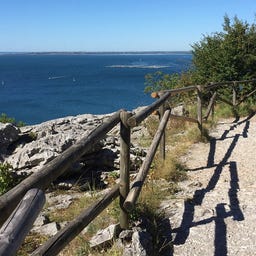
The Rilke Path, named after the poet Rainer Maria Rilke, offers spectacular views of the steep cliffs of the Karst plateau between Duino and Sistiana. The 2 km long hiking trail, which starts in the village of Duino, leads along rugged cliffs and through Mediterranean vegetation. Rilke himself was inspired to write his famous Duino Elegies while staying at Duino Castle and regularly walking here.
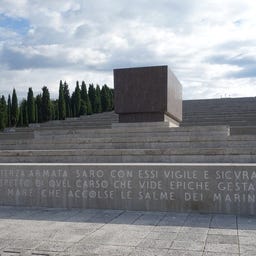
The largest military monument in Italy majestically overlooks the Friuli-Venezia Giulia region, where fierce battles raged along the Isonzo during World War I. Inaugurated in 1938 by Benito Mussolini, this memorial holds the remains of over 100,000 Italian soldiers and impresses with its monumental 22-step staircase, symbolizing a military formation.
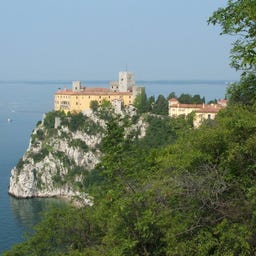
The Castello di Duino rises imposingly above the Adriatic Sea, offering breathtaking views of the Gulf of Trieste and the steep cliffs. Here, visitors can follow in the footsteps of Rainer Maria Rilke, who wrote his famous work, the "Duino Elegies," in this inspiring setting. At the castle, you can visit the well-preserved rooms, art collection, and the ruins of an older castle built in the 11th century. Combined with a hike on the nearby Rilke Trail, a visit here makes for a lovely day trip.
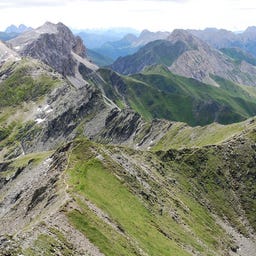
The Carnic Alps stretch along the border between Austria and Italy and are a paradise for hikers with their imposing peaks, alpine meadows, and crystal-clear mountain lakes.

Piazza della Borsa, a significant square in Trieste, is a vibrant hub known as the city's "second living room." Once the economic center in the 19th century, it houses the neoclassical Old Stock Exchange and features notable landmarks like the Leopold I column and the Art Nouveau Bartoli house. Recently the square was pedestrianized. Since it's in the historic centre, you'll have no trouble seeing it on your way to/from the Canal Grande.
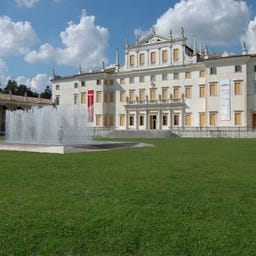
In the monumental Villa Manin in Passariano di Codroipo, Italy, you will find an impressive Baroque complex from the 17th century, which once served as the residence of the last Venetian Doge, Ludovico Manin.
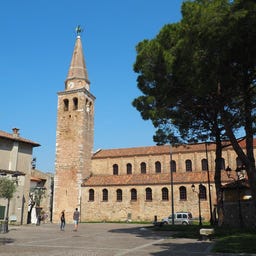
In the historic old town of Grado stands the Basilica di Sant'Eufemia, which was built around 580 AD by Archbishop Elia as the main church of the former Patriarchate of Grado.
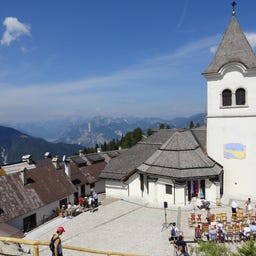
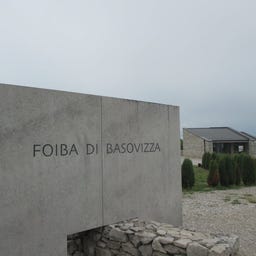
The Foiba di Basovizza near Trieste is a poignant memorial for the victims of the Yugoslav massacres after World War II. Originally established as a coal mine in the early 20th century, this 228-meter deep shaft became an execution site and mass grave for numerous Italian and German civilians and military personnel in 1945.
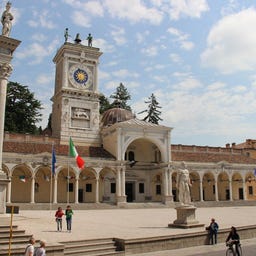
On the picturesque Piazza Libertà, the oldest square in Udine, an impressive ensemble of Venetian architecture unfolds. Once a marketplace for wine trading, this spot is lined with magnificent buildings like the Venetian-Gothic Loggia del Lionello from the 15th century and the Arco Bollani designed by Andrea Palladio.
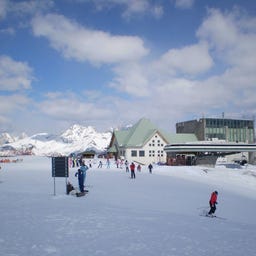
Monte Zoncolan in the Carnic Alps is considered one of the toughest climbs in Europe, with an impressive average gradient of 12% starting from Ovaro. Known as the "Balcony of the Carnic Alps," the mountain not only offers breathtaking views but also a versatile ski area with 30 kilometers of slopes.
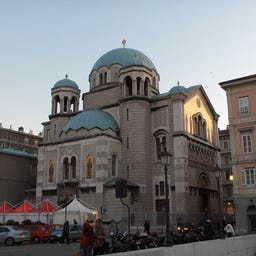
The Serbian Orthodox Church on the Grand Canal in Trieste impresses with its neo-Byzantine architecture, featuring a high dome, four bell towers, and intricate mosaics on the facade. This magnificent building, designed by Carlo Maciachini, was constructed between 1868 and 1885, replacing an earlier structure from the 18th century.
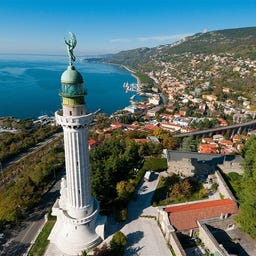
The Lighthouse of Victory (Faro della Vittoria) in Trieste is a remarkable monument built between 1923 and 1927 by architect Arduino Berlam. It serves a dual purpose as both a navigational aid, illuminating the Gulf of Trieste, and a commemorative monument honoring fallen sailors of World War I. Located on Poggio di Gretta, 60 meters above sea level, it features a majestic bronze statue of winged Victoria and an imposing column topped with a lantern. Visitors can explore the first terrace of this historic lighthouse, which offers fantastic panoramic views of the surrounding area.
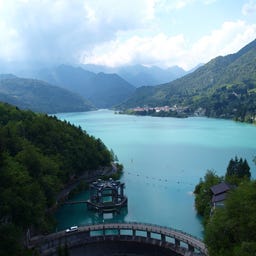
In the picturesque Valcellina region of the Pordenone province, you will find Lago di Barcis at an elevation of 402 meters, a reservoir with its characteristic turquoise-green water. The lake, officially named after its builder Napoleone Aprilis, was created in the 1950s with the construction of the 47-meter-high dam at Ponte Antoi and has since been used for power generation.

The Nassfeld Pass connects the Austrian town of Hermagor with the Italian Pontebba at an elevation of 1,530 meters and was an important trade route between Carinthia and Venice during the Middle Ages. The current road was built in 1915 during World War I and became the site of fierce battles between Italian Alpini troops and Austrian forces.
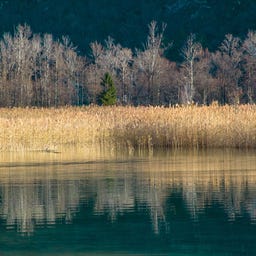
As the largest natural lake in the Friuli Venezia Giulia region, Lago di Cavazzo is beautifully situated at an elevation of 195 meters between the municipalities of Cavazzo Carnico, Bordano, and Trasaghis. This glacial lake reaches depths of up to 40 meters and maintains a constant temperature of around 10°C year-round, thanks to its underground springs.
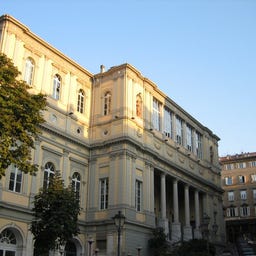
In the elegant Politeama Rossetti, the most important theater in Trieste, you can expect an impressive blend of culture and architecture. Designed by architect Nicolò Bruno, the building captivates with its eclectic style featuring Neorenaissance elements and has a remarkable technical feature: its dome could be opened on summer evenings.

High above the Italian town of Gorizia stands the medieval Castello di Gorizia, with its earliest fortifications dating back to the 11th century. The original castle was expanded in the 13th century to include a noble palace and has a rich history, from the rule of the Counts of Gorizia to Maximilian I of Habsburg and a brief Venetian occupation.
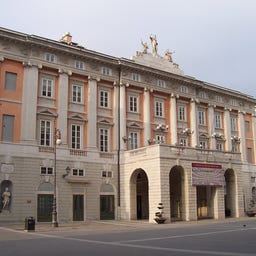
The Teatro Verdi, which opened in 1801, is the most important opera house in Trieste and impresses with its neoclassical architecture designed by Gian Antonio Selva and Matteo Pertsch. With around 1,300 seats, the venue, originally founded as the "Teatro Nuovo," still regularly hosts opera performances and cultural events today.

In the modern Parco Zoo Punta Verde in Lignano Sabbiadoro, you can expect to see around 1000 animals from over 80 different species across 10 hectares. Founded in 1979, the zoo is dedicated to species conservation and was the first facility in the world to launch a protection project for the endangered black-faced lion tamarin from Brazil in 2002.
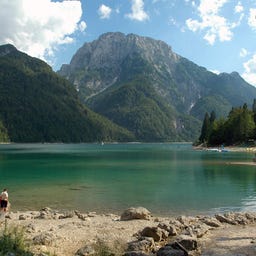
Nestled in the mountains of Friuli-Venezia Giulia, Lago del Predil sits at an altitude of nearly 960 meters - a natural mountain lake near the Italian-Slovenian border. With a length of 1.5 kilometers and a width of 500 meters, it is the second largest natural lake in the region after Lago di Cavazzo. Likely formed by glacial activity, the lake is fed by the Rio di Saletto and captivates with its clear waters and stunning mountain backdrop. Depending on which of the three bordering countries you are in, you might know it as Lâc di Rabil, Rabeljsko jezero, or Raibler See.
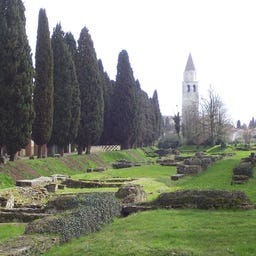
In northeastern Italy, you can find Aquileia antica, one of the most significant archaeological sites of the Roman world, which has been a UNESCO World Heritage Site since 1998. Founded in 181 BC, this Roman city developed into one of the most important trade centers of the Empire and even became one of the capitals of the Roman Empire under Emperor Maximian.
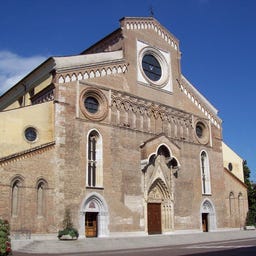
The Duomo di Udine, which has been the spiritual center of the northern Italian city since 1236, impressively combines Romanesque and Gothic elements on its exterior with a magnificent Baroque interior.
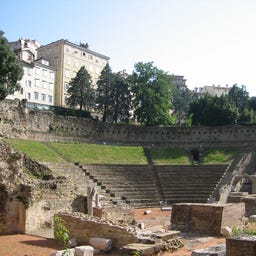
At the foot of the hill San Giusto, you discover one of the best-preserved Roman theaters north of the Adriatic, commissioned at the end of the 1st century BC by Quinto Petronio Modesto.
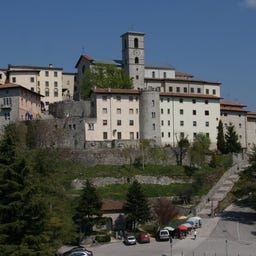
High above Friuli, at an altitude of 618 meters, stands the Santuario della Beata Vergine di Castelmonte, one of the most significant pilgrimage sites in the region, with roots dating back to early Christianity. The first documented mention of the church dates back to 1175, but after several destructions due to lightning strikes and earthquakes, it was rebuilt and expanded multiple times in the 15th and 16th centuries.
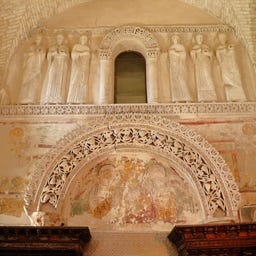
In the charming town of Cividale, you will find the Oratorio di Santa Maria in Valle, the most significant and best-preserved structure from the time of Lombard rule in Italy. This sacred building, also known as the Tempietto Longobardo, was built in the mid-8th century under Astolfo, the Duke of Friuli and King of the Lombards, as a monastery chapel.
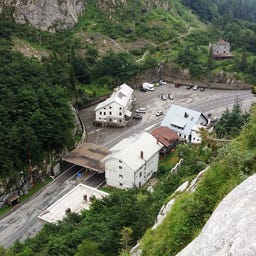
The Plöcken Pass connects the Austrian Kötschach-Mauthen with the Italian Paluzza as a historic Alpine crossing and has a history that spans thousands of years. Even in the Bronze Age, a path for pack animals ran through here, before the Romans built a fortified road in 15 BC, which later became an important trade route between Aquileia and Salzburg.
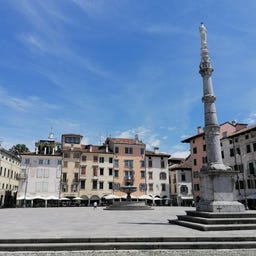
The "Piazza Giacomo Matteotti" is a central square in the Friulian city of Udine in northern Italy.
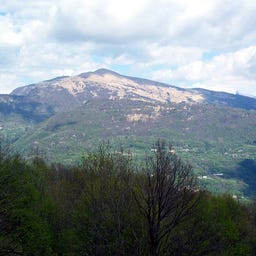
Rising 1,641 meters above sea level with its characteristic cone shape, the Matajur offers you a breathtaking panorama on clear days, stretching all the way to the lagoon of Grado and even Venice. This mountain in the Julian Pre-Alps was the site of the Battle of Caporetto during World War I, when Lieutenant Rommel captured it on October 24, 1917. Today, the Matajur attracts visitors with marked hiking trails of varying difficulty, an observatory opened in 2013, and a small church at the summit. In the mountain's karst formations and caves, you'll find an impressive diversity of over 600 vascular plants, while deer, foxes, and birds of prey inhabit the higher elevations.
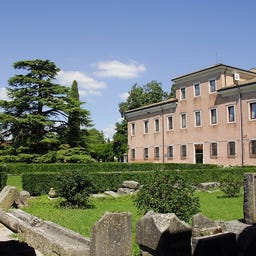
At the National Archaeological Museum of Aquileia, one of the largest museums dedicated to Roman civilization in the world, you can expect an impressive collection of ancient treasures housed in the historic Villa Cassis Faraone.
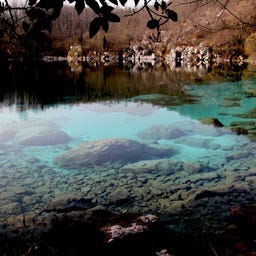
In the northern Italian region of Friuli-Venezia Giulia, you can explore the fascinating Riserva naturale del Lago di Cornino, a nature reserve that spans 487 hectares. Established in 1996, the reserve is managed by the municipalities of Forgaria nel Friuli and Trasaghis and is one of the most important protected areas in the region.
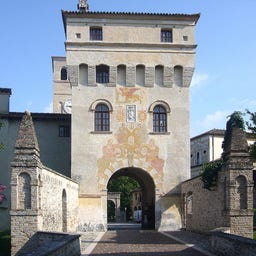
In the small town of Sesto al Reghena, you will find one of the most significant monastic complexes in Northern Italy, the Abbazia di Santa Maria in Sylvis, whose history dates back to the 8th century. The impressive entrance tower with its former drawbridge and the artistically designed facade featuring the Lion of St. Mark still testify to the abbey's former fortitude and wealth. Inside the church, you can admire stunning frescoes by the Tuscan painter Antonio da Firenze, while in the crypt rests the urn of Saint Anastasia, crafted from a single block of Greek marble in the 8th century. The history of the abbey is closely linked to important figures such as Charlemagne and later Pope Paul II, who granted the monastery significant privileges and donations.
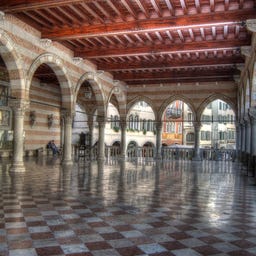
The majestic Loggia del Lionello has dominated the Piazza Libertà in the heart of Udine since the mid-15th century, captivating visitors with its distinctive façade of pink and white stone. Built in the Venetian Gothic style, this magnificent structure originally served as the town hall and has withstood both a devastating earthquake and a destructive fire throughout its history. With ten arches, a central balcony, and intricately decorated triforiums, this 15-meter-high building stands today as one of the city's most significant landmarks. Inside, it houses remarkable artworks, including frescoes by Nicolò da Venzone and a Madonna and Child by Giovanni Antonio Pordenone.
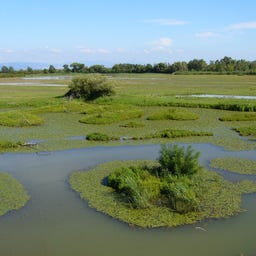
At the mouth of the Isonzo River into the Adriatic Sea lies one of the most significant wetlands in Northern Italy: the Riserva naturale regionale della Foce dell'Isonzo covers over 2,300 hectares of land and an additional 1,150 hectares of water. This protected area, which was designated as a nature reserve only in 1996, has a tumultuous history - originally a wild swamp and forest landscape, it was heavily altered in the 1930s due to dam constructions, before extensive restoration projects began in 1976. Today, this internationally important wetland, which was included in the Ramsar Convention in 2016, is a true paradise for birds, with no fewer than 322 documented species.
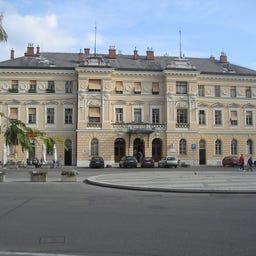
On the Piazza della Transalpina, you can experience European history up close: The square is divided by a stone line embedded in the ground into an Italian and a Slovenian half.
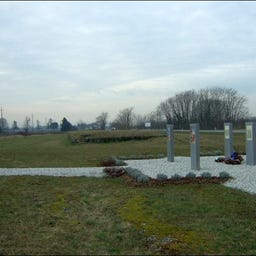
In the northern Italian Parco della Memoria, you encounter a dark chapter of history: from 1941 to 1943, this was the site of the Gonars concentration camp, where fascist Italy interned over 6,000 civilians from the occupied territories of Yugoslavia. The dramatic overcrowding of the camp, designed for 3,000 people, and the harsh conditions led to over 500 deaths, including many children.
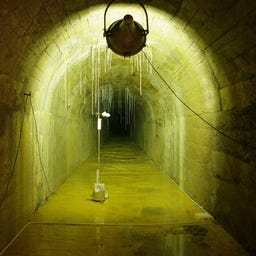
Kleines Berlin, or 'Little Berlin,' is a fascinating underground complex of World War II air-raid tunnels in Trieste. Managed by passionate volunteers, tours are available every last Friday of the month, though special arrangements can be made. For only 5 EUR, visitors can explore these historically rich tunnels, learning about Trieste's wartime history, German occupation, and speleology. The tunnels were constructed by the Germans after annexing Trieste in 1943, using three different companies to ensure secrecy. They served as an air-raid shelter for German soldiers and civil employees, with separate sectors for Italian and German use. This unique experience is highly recommended for history enthusiasts.
In the modern Teatro Nuovo, you experience one of the most important cultural centers of Udine, which has enriched the city's cultural scene since its opening in 1997 with a memorable performance of Gustav Mahler's 8th Symphony. The theater, named after the artist Giovanni da Udine, impresses with its horseshoe-shaped auditorium featuring three galleries and seating for 1,230 visitors.
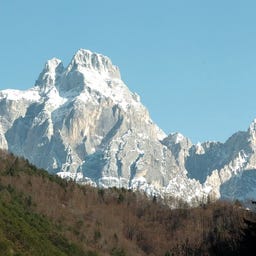
At 2,754 meters, the Jôf di Montasio stands majestically as the highest peak of the Italian Julian Alps, overlooking the Friuli-Venezia Giulia region. Since its first ascent by Hermann Findenegg in 1877, this striking mountain has attracted climbers and hikers with various routes, ranging from the technically challenging "Kugy-Horn" route to the classic Findenegg path via the Rifugio Giacomo di Brazzà.
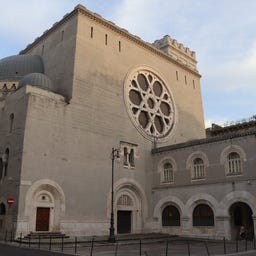
The Sinagoga di Trieste, inaugurated in 1912, is the second largest Jewish place of worship in Europe after the Great Synagogue of Budapest. Designed by architects Ruggero and Arduino Berlam, this monumental building impresses with its three facades featuring Star of David rosettes and oriental design elements. Inside, you will find a three-nave hall with a golden mosaic ceiling, while the floor is adorned with black-and-white mosaics. After a dark period during World War II, when the Nazis misused the building as a storage place for stolen artworks, the synagogue now serves once again as a spiritual center for the Jewish community of Trieste.
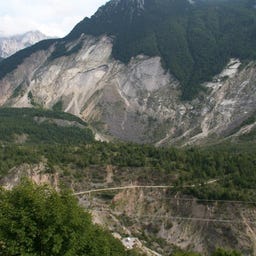
The 1,921-meter-high Monte Toc rises between the Piave and Vajont valleys on the border of the Italian regions of Friuli-Venezia Giulia and Veneto. Its name comes from the local dialect and means "piece" - a grim foreshadowing of its tragic history. The glacier-carved mountain landscape, cut through by the Vajont River, became the site of one of Europe's most devastating natural disasters on October 9, 1963, when a massive landslide plunged into the reservoir, burying several villages beneath it.
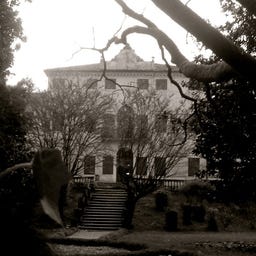
On the banks of the Livenza, you will find the Villa Varda, a historic residence from the 15th century, surrounded by a vast English landscape park. The name "Varda" suggests a former defensive structure, but today you will discover a peaceful oasis with exotic, ancient tree species and architectural highlights such as a neo-Gothic chapel, an ice house with a turret, and an orangery lined with balustrades.
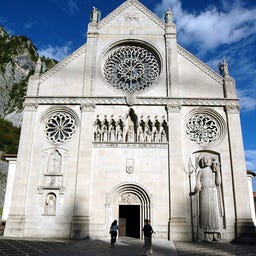
The majestic Duomo di Gemona combines Romanesque and Gothic architectural elements into an impressive church building from the early 14th century. The cathedral, dedicated to Saint Mary Assunta, captivates with its three rose windows and an imposing 7-meter tall statue of Saint Christopher on the facade.
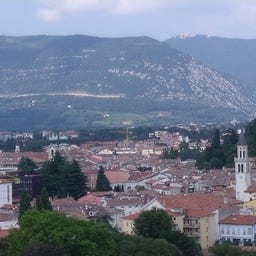
As the highest mountain in the province of Gorizia, Sabotino marks the border between Italy and Slovenia and offers you wide views over the Isonzo Valley and the plains of Gorizia. During World War I, the mountain was the site of fierce battles, especially during the Isonzo battles, until Italian troops finally captured it in 1916. Today, the mountain, declared a national monument in 1922, serves as an impressive open-air museum and is part of the cross-border Peace Parks. Particularly striking is the visible stone inscription "NAŠ TITO," which commemorates Josip Broz Tito and symbolizes the tumultuous history of the region.
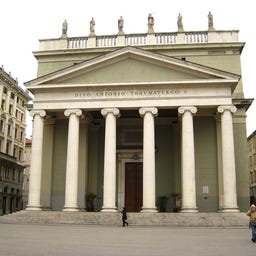
The impressive Chiesa di Sant'Antonio Nuovo has been a defining feature of the cityscape along the Canal Grande in the heart of Trieste since 1849. This neoclassical building, designed by the Swiss architect Pietro Nobile, replaced a baroque church from the 18th century that had become too small. It captivates with its striking façade, adorned with six Ionic columns and an equal number of saint statues by the sculptor Francesco Bosa.
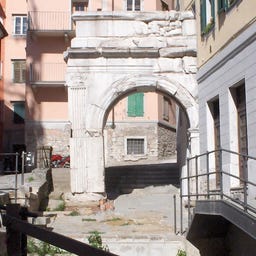
The Arco di Riccardo is one of the best-preserved Roman city gates in Trieste and was built in the 1st century BC under Emperor Augustus. The 7.2-meter-high archway took on its current form between 50 and 75 AD and impresses with its simple elegance, featuring Corinthian column capitals and a coffered ceiling.
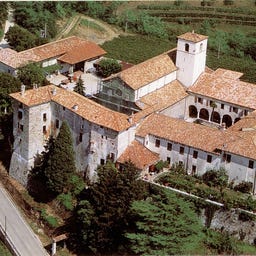
High above the eastern hills of Friuli stands the Abbazia di Rosazzo, an abbey founded in the 9th century by the hermit Alemanno, dedicated to Saint Peter. The Romanesque monastery complex, with its three-nave church, cloister, and crucifixion chapel, has undergone several renovations over the centuries and was revived by Dominicans after a devastating fire in 1509.
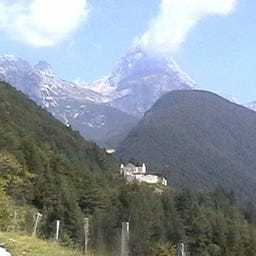
At an altitude of 1,156 meters, the historic Predil Pass in the Julian Alps connects the Italian Cave del Predil with the Slovenian Bovec. This strategically important crossing was developed as a trade route in the 14th century and has marked the border between the two countries since the 18th century.
In the picturesque border area between Italy and Slovenia lies the hilly landscape of Collio, known for its excellent wines under the DOC designation "Collio Goriziano." Between historical landmarks like the Castello di Trussio, Schloss Dobrovo, and the Church of San Floriano, well-maintained vineyards stretch out, where olives are increasingly being cultivated again. The region's tumultuous history is reflected in its cultural diversity - here, Italian, Friulian, and Slovenian influences blend into a unique mix. After turbulent times under Habsburg rule and the upheavals of both World Wars, the area is now divided between Italy and Slovenia, with a Slovenian-speaking community still living on the Italian side.
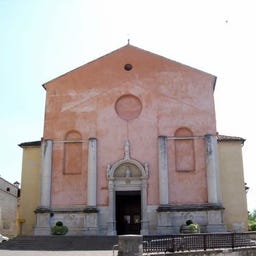
The Duomo di San Marco has shaped the cityscape of Pordenone as the main Catholic church since the 13th century, with the bell tower completed in 1347, featuring elegant terracotta arches, becoming a landmark. In the single-nave cathedral, you will find six side chapels from the 16th century, including the famous "Madonna della Misericordia" by Il Pordenone.
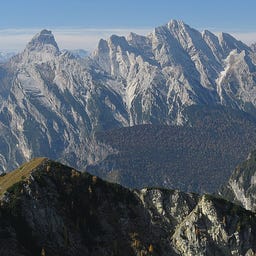
In the Prealpi Carniche, an impressive mountain range south of the Carnic Alps, you can expect a diverse pre-Alpine world with peaks reaching up to 2,703 meters. The region spans across Friuli-Venezia Giulia and Veneto, with the Dolomiti Friulane and their striking sedimentary rock formations being some of the highlights.
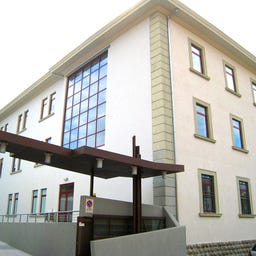
At the Museum of Natural History in Trieste, which has been located in a former barracks since 2010, you will find one of the most significant scientific collections in Italy, featuring over two million exhibits. Here, you can admire "Carlotta" - the largest mounted great white shark in Europe, measuring 5.4 meters long - and "Antonio," a nearly complete 75-million-year-old dinosaur skeleton.
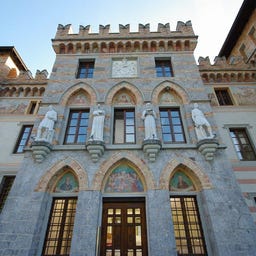
In the northern Italian town of Vito d'Asio stands the Castello Ceconi, an impressive neo-Gothic castle from the 19th century. The builder, Giacomo Ceconi, a successful railway entrepreneur and later count, commissioned this eclectic structure featuring Gothic balconies, battlements, and Renaissance elements to maintain his connection to his hometown of Pielungo.
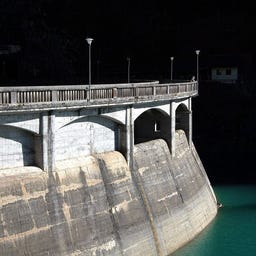
The Lago di Sauris is an artificial reservoir located at an altitude of 977 meters in the Val Lumiei in northern Italy, completed in 1948 after seven years of construction. The impressive dam, which was the second highest in Europe at the time, is now accessible by vehicles and offers you spectacular views of the lake, also known as "lago della Màina." You can reach the water via three different routes, with the shortest one leading from Ampezzo through 9 kilometers and three tunnels. When the lake is occasionally drained, the remains of the former settlement emerge. Parking at the dam is limited, but you can find additional spaces on both sides of the valley.
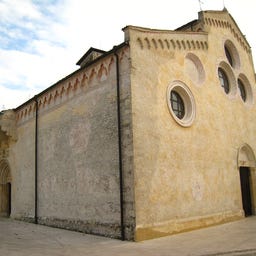
The Chiesa di Santa Maria Maggiore combines Romanesque and Gothic architecture into an impressive main church of Spilimbergo, built between 1284 and 1359 on the orders of the city lord Walterpertoldo.
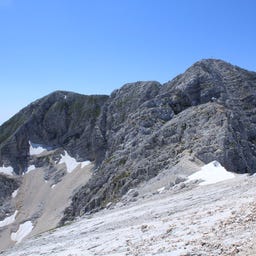
The Monte Canin rises as an impressive limestone giant on the Italian-Slovenian border, forming the westernmost foothill of the Julian Alps. On its vast high plateau, ranging from 1,800 to 2,300 meters, you’ll find one of the lowest glacier areas in the Alps and a fascinating karst landscape with deep caves.
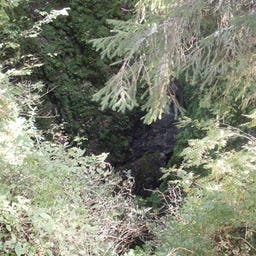
The Bus de la Lum - translated as "Hole of Light" - is an impressive karst chasm located on the Cansiglio Plateau in the Italian region of Friuli-Venezia Giulia. This 180-meter deep vertical shaft was first explored in 1924 and is now recognized as a national monument of Italy.
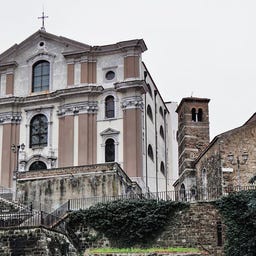
The impressive Chiesa di Santa Maria Maggiore stands at the foot of the San Giusto hill in the historic center of Trieste and is considered the most important Baroque church in the city. Initiated by the Jesuits, construction of the church began in 1627, but it was not consecrated until 1682. Its distinctive dome, adorned with frescoes of the four Evangelists by Giuseppe Bernardino Bison, was only added in 1817. Inside, the three-nave structure with a Latin cross layout impresses with a magnificent main altar, created between 1672 and 1717, and decorated with marble statues of significant saints. Today, the church, which has been cared for by Franciscans since 1922, serves as a parish church and was granted the status of a diocesan sanctuary in 2011.
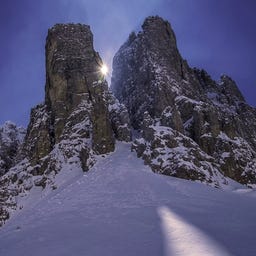
In the Parco naturale delle Dolomiti Friulane, a UNESCO World Heritage site in the Friuli-Venezia Giulia region, you can explore nearly 37,000 hectares of untouched Dolomite landscapes with rugged peaks and deep valleys.

The impressive Fortezza di Palmanova in northern Italy is one of the best-preserved fortifications in Europe, featuring a distinctive star shape that unfolds in three concentric defense rings. Construction began in 1593 under the Republic of Venice and continued for two centuries until Napoleon Bonaparte completed the last ring in 1806. With its massive bastions, surrounding moat, and three historic city gates - Porta Cividale, Porta Aquileia, and Porta Udine - the structure is considered a masterpiece of military architecture from the 16th to 19th centuries. Since 2017, the fortress has been part of the UNESCO World Heritage as part of the Venetian defensive works.
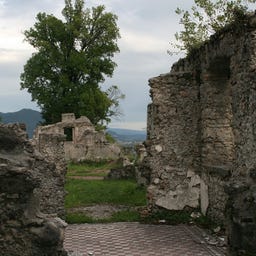
High above the town of Osoppo in the Friuli-Venezia Giulia region stands the Fortezza di Osoppo, an impressive fortress whose history dates back to pre-Roman times. The partially restored site, which has been protected as a national monument since 1923, was only abandoned as a military facility in 1951.
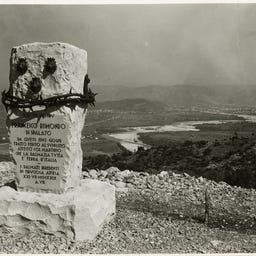
On Monte San Michele in the Italian Karst region, you will find a moving piece of history from World War I, where Austro-Hungarian and Italian troops once faced each other in the Battle of the Isonzo.
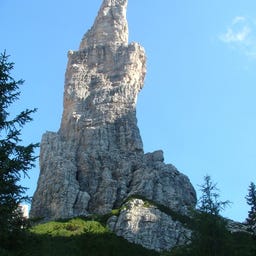
In the Friulian Dolomites, the Campanile di Val Montanaia rises - an impressive 300-meter-high rock spire shaped by millennia of glacial erosion. It wasn't until 1902 that Victor Wolf von Glanvell and Karl von Saar made the first ascent of this free-standing tower, which is now considered one of the classic climbing destinations in the region.
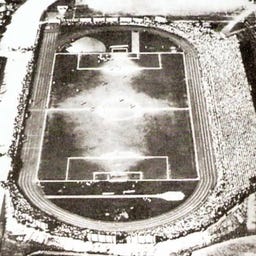
On the grounds of the former Stadio Moretti, one of the first modern sports stadiums in Italy built in 1924, you now find a green oasis in the heart of Udine. The historic stadium, named after the local Moretti brewery, was home to the football club Udinese Calcio and the site of their greatest success - the runner-up position in Serie A in 1954/55.

At an altitude of 1508 meters, the Dreiländereck is where the borders of Austria, Italy, and Slovenia meet, along with three different language and cultural areas. This popular ski resort in the Karawanken offers you 17 kilometers of slopes and eight lift facilities.

The Chiesa di San Nicolò is a Greek Orthodox church in Trieste, built between 1784 and 1787 for the growing Greek trading community. The architect Matteo Pertsch designed the neoclassical facade in 1819/20, while the interior features a richly gilded iconostasis and numerous images of saints from the 19th century that reflect the Orthodox tradition.
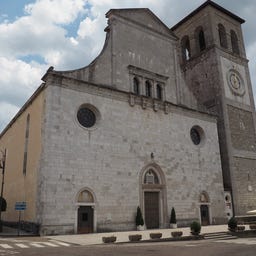
The Basilica of Santa Maria Assunta in Cividale del Friuli, also known as the Cathedral of Cividale, is a significant historical landmark of the city. Originally built in 796, the basilica has undergone numerous renovations due to events such as fires and earthquakes. In 1451, a new basilica was commissioned, blending Gothic and Renaissance styles, which further evolved over the centuries.
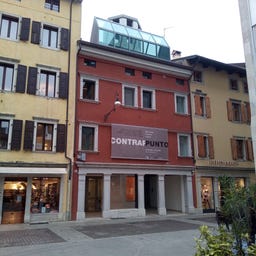
In the Casa Cavazzini, a meticulously restored city palace from the 16th century, you will discover Udine's most important museum for modern and contemporary art. The impressive collection features around 4,000 works, including paintings by Pablo Picasso, Georges Braque, and Giorgio De Chirico, spread across two floors of the historic building. Particularly fascinating are the uncovered frescoes from the 14th century and the 1930s, as well as the archaeological finds visible through glass panels, including a Venetian cistern and prehistoric ceramics from the Iron Age. The museum, which opened in 2012, owes its beginnings to the merchant Antonio Marangoni, whose legacy laid the foundation for the collection of young artists.
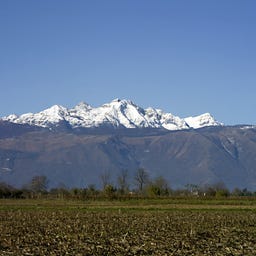
The majestic Monte Cavallo rises to 2,251 meters as a striking peak in the Prealpi Bellunesi and is even visible from Venice on clear days. Since its first ascent by the botanists Giovanni Girolamo Zannichelli and Domenico Pietro Stefanelli in 1726, the mountain has transformed into a versatile outdoor paradise.
On Monte Calvario, west of Gorizia, you will find a moving testament to World War I. This strategically important hill overlooking the Isonzo River was fiercely contested between 1915 and 1916, changing hands multiple times between Italian and Austro-Hungarian troops.
In the Prealpi Giulie region of Friuli-Venezia Giulia, you can discover one of the most significant cave systems in Northern Italy, the Grotte di Villanova, which has been explored since the 19th century. The Grotta Nuova di Villanova, discovered by Pietro Negro in 1925, is one of the largest known contact caves in the world, featuring its distinctive trapezoidal cross-section.
